How to choose a pastry spatula?
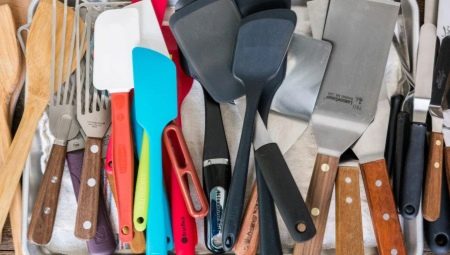
Nowadays, many kitchen tools have been invented to facilitate the work of the cook. This article will focus on the pastry spatula, its varieties and features of choice.
Varieties
How do culinary spatulas differ from construction counterparts?
A pastry spatula or scraper is a tool that is designed to level and cut culinary mass (dough, cream, etc.).
According to the material from which these devices are made, there are metal, wooden, silicone and plastic accessories.
Plastic tools can be made of soft or hard material.
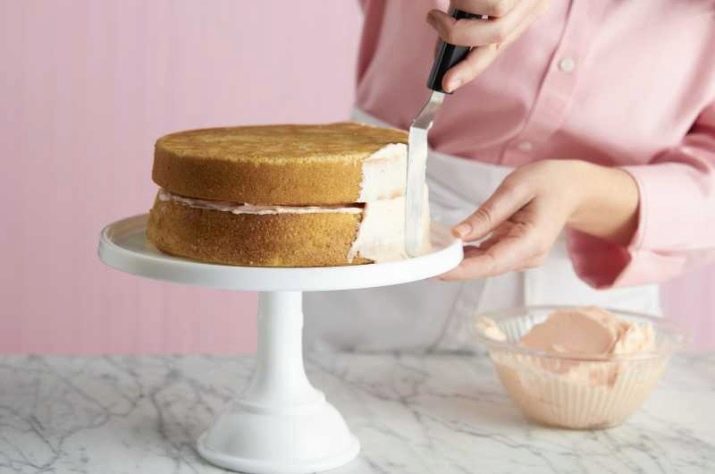
Each species has its own pros and cons. The most durable and durable is considered steel spatula, but use caution when using it to scrape off dough residues from dishes or countertops.
Plastic and silicone tools may break if you press hard on them while working. Wooden products with prolonged contact with liquid can swell and split during drying.

Spatula - universal accessory, they clean the dishes / table from pieces of sticky dough, level out the layers of cream on the cake or dough in the form, divide the culinary mass into equal parts, etc. It is most convenient to have a separate tool for each such operation, which is optimally suitable in shape and material.
For example, it is better to scrape off the stuck dough with a hard plastic spatula, and for smoothing a semi-liquid mass - cream or whipped cream - a soft plastic spatula is also suitable. A stainless steel spatula is ideal for cutting dough - a sharp, rigid tool.
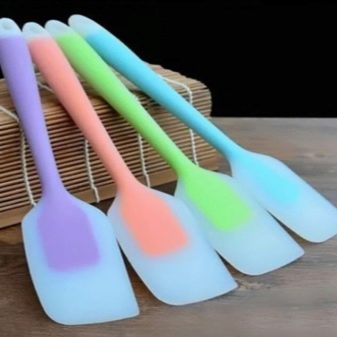
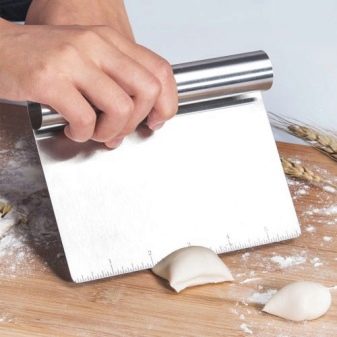
But it is impractical to clean the dishes with a metal scraper: on enameled - and any other - dishes, it can leave ugly stripes, scratches and ruin the coating.
According to their dimensional characteristics, tools are divided into small, medium and large.
These accessories also differ in the nature of the cutting edge: it can be straight, wavy or with teeth, like a saw. To decorate the cake with straight grooves, it is advisable to use a notched trowel, to obtain a flat surface - a straight one.
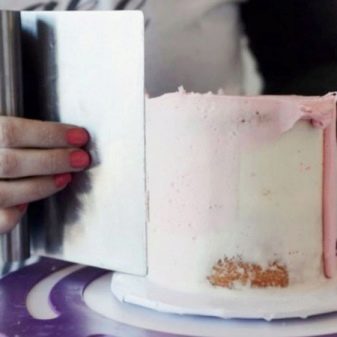
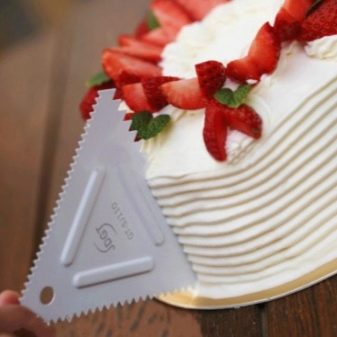
The shape of the working surface can be distinguished rectangular (square), oval and semi-oval tools. There are also triangular and trapezoidal blades. Some models are equipped with handles (straight and curved) for ease of use, for example, for mixing semi-liquid dough.
For the convenience of cutting the dough into identical pieces, spatulas with a size ruler are also produced.
For baking thin pancakes, they came up with T-spatula - pancake dispenser. It is a cylinder 15 to 28 cm long with a long handle.
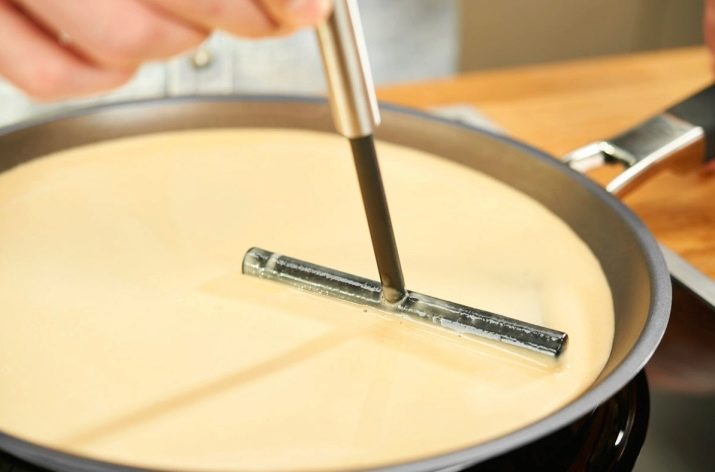
These devices are most often made of wood and sold disassembled. But there are also plastic products.
Angled spatulas are tools whose working surface is curved. They can be used both for removing ready-made dishes from dishes and for decorating confectionery. To decorate sweet pastries with chocolate, marzipan or mastic, use palette knife blades. The external shape of such accessories is very similar to a builder's trowel.
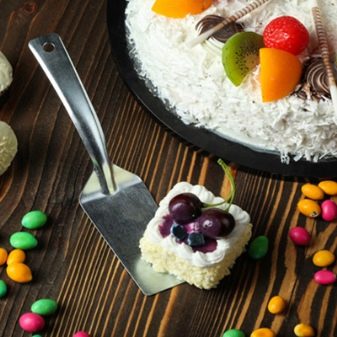
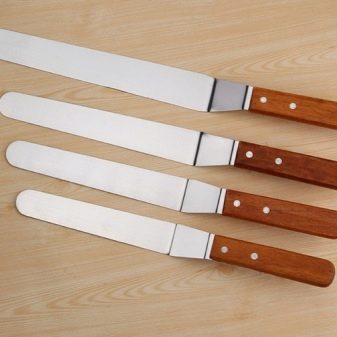
It should be noted that confectionery scrapers can be either one-sided (the most common option) or two-sided. There are also scraper knives.
How to choose?
First of all, the choice depends on what you need this accessory for. Of course, you can buy a whole collection of spatulas at once - for all occasions, and this is the best option for those who spend a lot of time in the kitchen. It is convenient and practical.
But what if you cannot afford such expenses, albeit not very large ones? Or haven't you found a set on sale that suits your discerning taste? Or do you need a single tool for a specific operation?
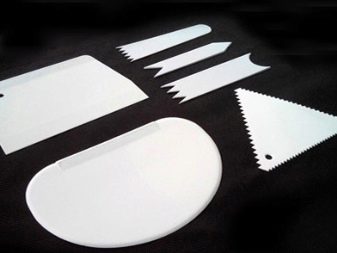
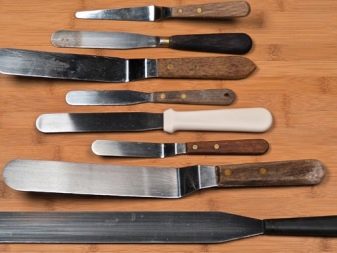
There is only one way out - to decide on the material, shape and type of the working edge of the product.
The most versatile type of culinary spatula is considered to be a semi-soft plastic tool with a semicircular shape and an even edge.
It's good if it's lined up (with a ruler). With such a product, you can clean the dishes from excess dough, and divide the culinary mass into equal shares, and level the surface of the dish, and after cooking, scrape off the adhering pieces from the working surface (table).
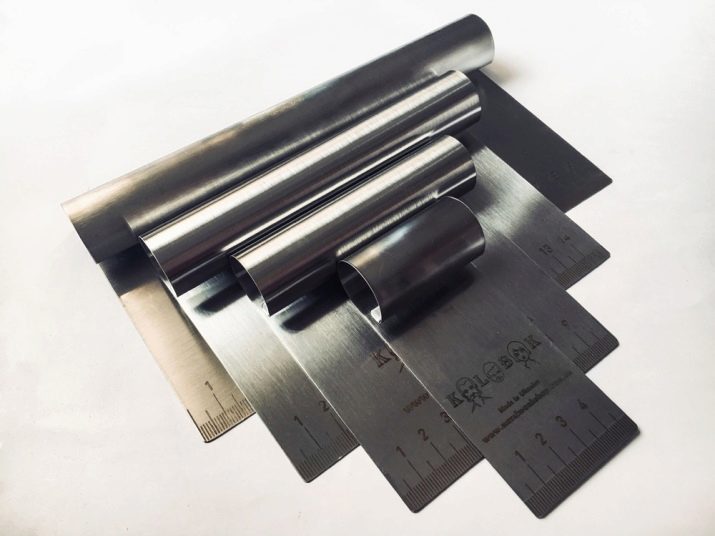
Before buying, hold the tool in your hands and consider whether it will be convenient for you to use it. If the product did not fit your hand, look for another model.
Useful Tips
How to properly work with this culinary accessory?
Here is a rough sequence of actions.
- Place the dough on a floured table. If it sticks a lot to your hands, fold it in half and dust it with flour. If the dough is of a suitable consistency and is not sticky, you can do without it.
- Take a spatula in your hand. Do not squeeze it too hard, it should lie comfortably in your hand, without muscle tension.
- You need to cut the dough not at right angles to the table, but slightly at an angle, and in the direction opposite to the bulk of the dough.
- You need to lightly press the flour mass with a spatula, slightly increasing the pressure at the end when you cut it to the working surface of the table. Then move the cut piece aside.
- The spatula should be a couple of centimeters higher than the layer of dough in order to cut it right through to the end. If the tool is smaller and does not cut through the dough completely, the dough begins to stretch and its structure is disturbed.
- All movements must be precise and accurate.
- The working surface of the scraper must always be clean, otherwise dough particles will stick to it. Therefore, after each cut, inspect the instrument and clean it as necessary.
- After you have prepared the cake (whites, pies, etc.), the scraper can be used to clean the countertop. The same rule applies here as in working with the dough - do not use too much force, otherwise, if you have a metal accessory, you can scratch the surface of the table, and the plastic one can simply break.
For a video about a budget option for a beginner pastry chef's set and the necessary spatulas, see below.








